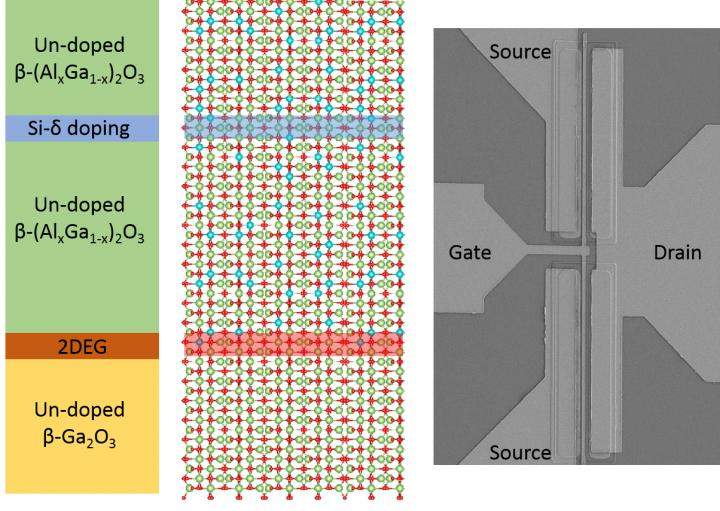
Researchers from Ohio State University have demonstrated the wide-bandgap semiconductor gallium oxide (Ga2O3) can be engineered into nanometre-scale structures to enable electrons to move faster within the structure and improve the efficiency of future high-power electronics.
The article, ‘Demonstration of high mobility and quantum transport in modulation-doped β-(AlxGa1-x)2O3/Ga2O3 heterostructures,’ was published in the journal Applied Physics Letters, and discusses how gallium oxide could further improve semiconductor technology.
“Gallium oxide has the potential to enable transistors that would surpass current technology,” said Siddharth Rajan of Ohio State University, who led the research.
For use in electronic devices, the electrons in the material must be able to move easily across an electric field and demonstrate a ‘high electron mobility’. Many semiconductors are doped with other elements to improve their effectiveness, yet dopants also scatter electrons, limiting the material’s electron mobility.
To solve this problem, researchers have been using a process called modulation doping, a common technique to achieve high mobility that had not been applied to gallium oxide until the experiments of Rajan’s team.
The researchers created a semiconductor heterostructure, creating an atomic interface between gallium oxide and its alloy with aluminium, aluminium gallium oxide; these semiconductors have the same crystal structure but different energy gaps. A sheet of electron-donating impurities, measuring a few atoms thick, was embedded inside the aluminium gallium oxide, enabling electrons to move across into the gallium dioxide.
How well do you really know your competitors?
Access the most comprehensive Company Profiles on the market, powered by GlobalData. Save hours of research. Gain competitive edge.

Thank you!
Your download email will arrive shortly
Not ready to buy yet? Download a free sample
We are confident about the unique quality of our Company Profiles. However, we want you to make the most beneficial decision for your business, so we offer a free sample that you can download by submitting the below form
By GlobalDataThe experiment demonstrated record mobilities, and showed processes known as Subnikov-de Haas oscillations, quantum phenomena that confirm the formation of high mobility 2-D electron gas in the system, and enabled the researchers to measure critical mass properties. This structure could lead to a new class of quantum structures and electronics that take advantage of gallium oxide.
Gallium oxide is particularly useful in high-power and high-frequency devices as its bandgap – the energy needed to power an electron to the point where it is conductive – is one of the largest of the wide bandgap materials being developed. It can also be produced directly from its molten form, unlike other semiconductors, enabling high-quality crystals to be manufactured on a large scale.
Using wide bandgap semiconductors to produce blue LEDs was at the centre of the research by Shuji Nakamura, Hiroshi Amano and Isamu Akasaki which won the 2014 Nobel Prize in Physics.



